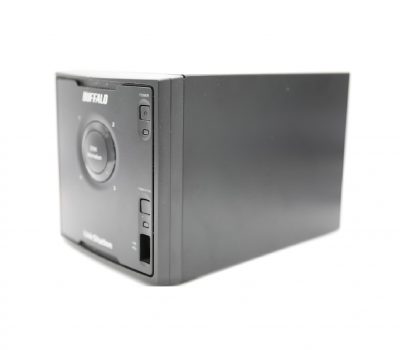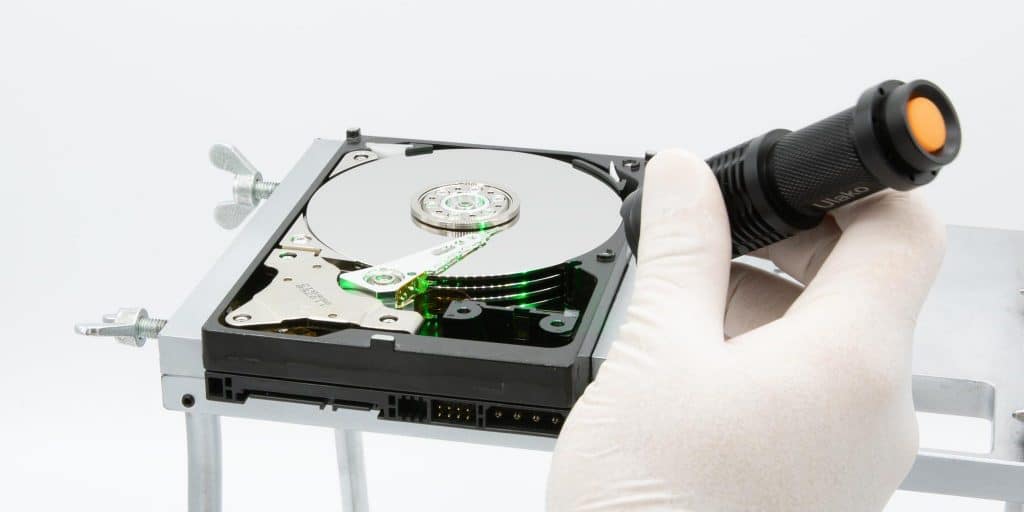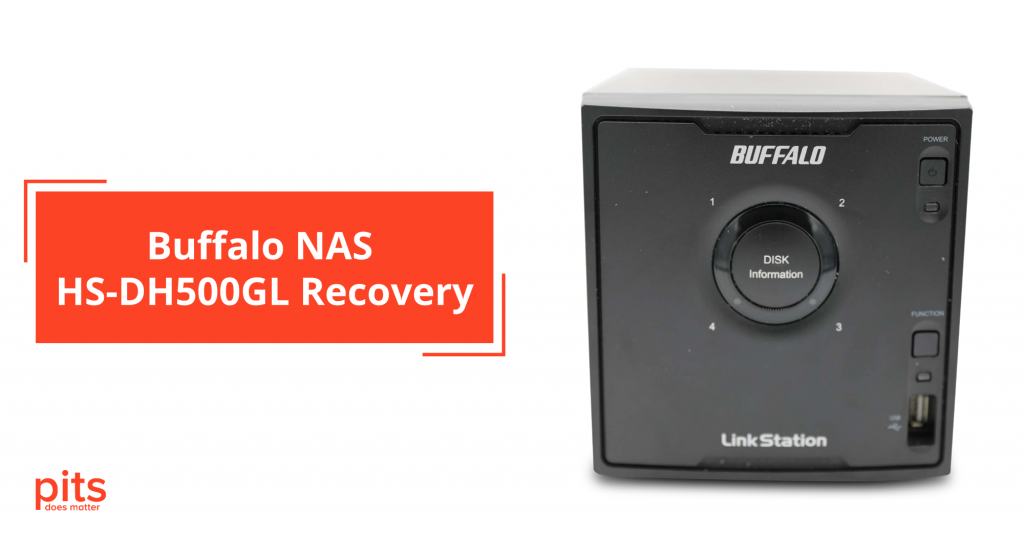Personal home servers play a critical role in our digital lives. The Buffalo NAS HS-DH500GL unit has been a popular choice for its reliability and convenience for home users. However, like all technology, it’s not immune to failure. This post will explore a case study of successful data recovery from a Buffalo NAS HS-DH500GL LinkStation unit, a testament to the resilience and importance of data recovery services.
Background of Dead Buffalo NAS HS-DH500GL
Our client had relied on their Buffalo NAS HS-DH500GL as a central pivot for their digital storage at home. The server system was configured in RAID 5 using four 500GB old IDE hard drives. This setup provided an extra layer of data protection for his precious photos, videos, and documents, ensuring peace of mind. Unfortunately, without any prior warning, his NAS device suddenly failed, leaving him devastated and unable to access the years’ worth of data.
Dead Buffalo's Problem Identification
After the initial contact, we learnt that the device had completely shut down. We quickly arranged for the unit to be sent to our laboratory for a thorough assessment. Our diagnostic tests confirmed our suspicions: the Buffalo NAS had been affected by its components’ expected wear and tear, with two drives showing bad sectors, one with a stuck head and the last with a stuck motor.
We provided the client with a comprehensive report and a quote for the recovery process. The client recognized the importance of his irreplaceable data and agreed to proceed with the recovery process.
"*" indicates required fields
Recovery Process of Buffalo HS-DH500GL
The data recovery process began when our team of engineers identified the root cause of the failure. They determined that the failure was due to aging and wear, a common issue that impacts the reliability of data storage systems over time.
The IDE hard drives within the Buffalo NAS unit were configured in a RAID 5 setup designed to balance storage capacity, performance, and data redundancy. However, our engineers uncovered that the drives suffered from different failure reasons, complicating the recovery process.
Specifically, two of the drives were found to have bad sectors, a typical failure resulting from physical damage on the disk surface where data is stored. This issue can lead to data loss or corruption, making recovering information from these sectors challenging.

Further complicating the situation, one of the drives was discovered to have a head stuck, a mechanical failure where the read/write head of the hard drive becomes fixed in a position and cannot move across the disk’s surface. This prevents access to the data stored on the drive, necessitating specialized techniques to free the head and recover the data.
Additionally, another drive was found to have a motor stuck, meaning the motor that spins the hard disk platters could not function. This type of failure completely halts the ability to access or read data from the drive, as the platters must spin for the read/write heads to access the data stored on them.
Implementation of the Recovery Process
The data recovery process for Buffalo NAS HS-DH500GL involved our engineers addressing these varied and complex issues. Our engineers utilized various specialized tools and techniques to tackle each type of failure. We used advanced data recovery software for the drives with bad sectors to attempt to read around the damaged areas and recover as much data as possible.

We performed mechanical repairs for the drive with the stuck head and the one with the stuck motor.
This involved carefully opening the drives in a cleanroom environment to avoid further damage and performing the delicate repairs needed to make the drives operational enough to recover the data.
Despite the challenges, our engineers’ expertise enabled us to successfully recover the critical data from the RAID 5 configuration, emphasizing the importance of having a skilled and experienced data recovery team.
Following the successful data recovery, we transferred the retrieved information to an external hard drive at our client’s request.
Results of Recovered Buffalo HS-DH500GL
At the end of the process, we conducted a file verification session with the client, confirming the successful recovery of his valuable data. Upon restoring his photos, videos, and documents, our client expressed immense satisfaction and relief. He was also impressed by our team’s attention to detail and the quality of our work.
For those who rely on Buffalo LinkStation NAS devices for their storage needs, rest assured that solutions are available even in the face of daunting failures. Remember, proactive data backup strategies are invaluable, but in critical situations, data recovery services stand as a last, powerful guard against data loss.
If you have been struggling with similar issues or want to secure the future of your data, contact us today to learn more about our Buffalo data recovery services. Our team is ready and equipped to handle any challenge and recover your valuable data successfully.
FAQ - Buffalo HS-DH500GL Recovery
Can data be recovered from a Buffalo NAS HS-DH500GL if multiple drives fail?
Yes, data recovery is possible even when multiple drives fail in a Buffalo NAS HS-DH500GL. It requires experienced data recovery specialists who can use specialized tools and techniques to address the unique challenges of different types of drive failures.
Is it possible to repair drives with bad sectors or stuck components?
While drives with bad sectors can sometimes be read using advanced software to work around the damage, mechanical issues like stuck heads or motors typically require precise repairs in a cleanroom environment. These are complex procedures and require professional assistance.
How long does data recovery from a Buffalo NAS typically take?
The time frame for data recovery can vary greatly depending on the extent of the damage and the issue’s complexity. After an initial evaluation, a data recovery specialist should be able to provide an estimated timeline for the recovery process.
What should be done immediately after a Buffalo NAS HS-DH500GL device failure?
After encountering a failure with your Buffalo NAS HS-DH500GL, it’s crucial to power down the device to prevent further damage and contact a professional data recovery service as soon as possible.
How can I prevent future data loss on my Buffalo NAS HS-DH500GL?
To prevent future data loss, it’s important to implement a robust backup strategy that includes regular backups to multiple locations. Additionally, consider monitoring the health of your drives and replacing them proactively before they fail.
